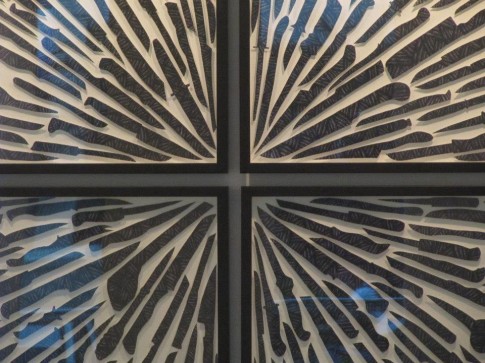you have to register but the process is easy enough. Mark Salvatus is one of the few artists I would do an exhibit note for in a heartbeat, not so much as a matter of friendship, but as a matter of believing in his work, the kind of thinking that goes into it, the kind of artistic vision he constantly has. this exhibit note for his “The Other View” exhibit in late 2011 is an assessment as well of his body of work. you can see my photos of the exhibit here.
sa ikauunlad ng bayan! sining ang kailangan!
VOTE VOTE VOTE!
After Art
The necessary context of any art production in this country is unquestionably the recent spate of attacks against it, which is to go beyond the superficial articulations of an ultra-conservative fundamentalist religious minority, and to look at what the self- and state-appointed vanguards of culture silence in their assessment of the deluge: a perspective revealed to be limited in its denial of development, an insecurity that’s concretized by a distrust in the contemporariness of art and the utter refusal to even acknowledge its possibilities. That in the end they become complicit in the processes that suppress difference and change, revolt and rebellion, is a measure of self-aggrandizement that also allows them to claim the new only when its achievements are difficult to ignore. That they are after art is to say that they are parasitic, as they prowl for cultural production that might be akin to their own, if not that which is ready for appropriation.
Mark Salvatus can only really operate within this space, because his work would be easy to assess as successful by the standards of the powerful and delusional who believe that we are all still operating by their rules. Awards and residencies have been a by-product of Salvatus’ production, ones that also figuratively allow him to get to places that would be after art in the sense of appropriation – a necessary engagement with a gallery system that’s always in danger of silencing art, if not at the very least decreasing the volume of Salvatus’ expression.
But the work in Other View, as with all of Salvatus’ work so far, elides this process of appropriation precisely because it puts into question the notion of capture. Salvatus’ engagement in the seizure of objects and moments, the fleeting and transient, what is deemed excess and forgotten, is all at once ironic and the point: it is premised on a process of art making that involves Salvatus’ capture of an object towards expression as an end in itself, where the end that is the art object within a controlled art space isn’t entirely his at all. It is in that ending that the potential for its determination as a successful piece of art – whatever that means – falls within the discourses from which art production sprouts, within which the art object becomes art, within which the spectator is the limitation precisely of the dominant discourse that’s also necessarily a form of entrapment. The spectator is after art here, running on a treadmill that promises nothing but a false sense of capture, in so much as everyone’s seizure of the art object becomes correct.
Which is not at all the point of having the work in Other View evade capture. Salvatus engages the spectator not in the act of going after art as an end in itself, but in the act of stepping into the tenuous ambiguous line that is the gaze as a space of spectatorship and experience, intertextuality and collective consciousness, that is borne after art, that is, after the object has been made into art by the artistic process and system, and is left within the spaces that already deem it successful. The point is to engage in the complexity of the gaze as a space that binds spectator to art object, where the determination of what art is / where art lies / how art becomes is forced into existence within that unstable realm of a common urbanity and its contingent versions of violence – the ones that are muzzled precisely by the idea that it is of, and actually is in, the everyday.
That urbanity and the everyday are tied to the idea of violence, literal and figurative, is crucial to Other View. Here where knives and blades are useful and criminal, here where the consumerism that permeates our lives is seen as the death of identity and ideology in the face of capital, here where the accidents of art in the prosaic allow random moments and objects and conceptual art to enter into a form of cancellation, here where dry wit and deadpan humor might manifest itself as a layer that’s violent in itself. Right here is where Other View demands an engagement that’s personal but borne of the collective, intimate but distant, as quiet and abstract as the act of looking is, but also violent in its insistence on dialogue and interrogation.
It is in this process that the spectator and the art object, the artist and his found accidents, remain always in the realm of potential, necessarily within the act of determination. That in the end this process might bring back objects/moments/accidents to its artlessness, that is, back to its prosaic and everyday existence, is a risk that is being taken in Other View. It is one that would in fact only reveal the possibility that after art, there is absolutely nothing here at all. That would be precisely the point.
— Katrina Stuart Santiago, October 2011.

[…] sa art appreciation mula kay Katrina Stuart-Santiago: “…ng labis-labis na pagbibigay-halaga sa sarili na nagbibigay-laya rin sa kanilang […]